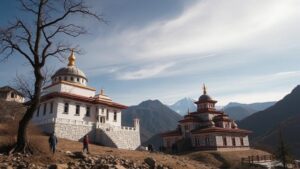Searching for the “Rainbow City” described in Native American lore as a shimmering metropolis.
Searching for the Rainbow City in Native American Lore
The concept of the Rainbow City is a fascinating aspect of Native American mythology, a shimmering metropolis that stands as a beacon of hope and beauty in various indigenous cultures across North America. This article delves into the origins of the legend, the cultural significance of such myths, and how they reflect the values and beliefs of Native American peoples.
Origins of the Rainbow City Myth
The Rainbow City legend varies among Native American tribes, but it commonly represents a utopian realm filled with vibrancy and harmony. Historians suggest that these tales arose during periods of hardship, serving as a source of inspiration and a vision of a better future. For example, the Lakota Sioux and some tribes of the Southwest, like the Navajo, speak of a brilliant city situated in the clouds, often viewed as a paradise for the spirits of the departed.
One notable legend comes from the Hopi people, who describe a city that appears on clear days from high mountains. This city is said to be constructed of crystalline structures and adorned with vibrant colors, representing the interconnectedness of all life. The Hopi belief emphasizes living in harmony with nature and the lessons it teaches, suggesting that the Rainbow City embodies their ideals.
Cultural Significance of the Rainbow City
The Rainbow City not only embodies an idealized vision of society but also serves as a cultural touchstone for teaching important life lessons. It promotes concepts such as
- Unity: Many legends stress that the inhabitants of the Rainbow City work together, transcending conflicts and prioritizing community welfare.
- Harmony with Nature: The prosperity of the city often reflects the health of its surrounding environment, reinforcing the importance of ecological stewardship.
- Hope: During challenging times, the Rainbow City serves as a symbol of hope, suggesting that better days are possible through perseverance and faith.
Real-World Parallels and Historical Context
While the Rainbow City exists within the realm of myth, historical phenomena reflect similar aspirations within Native American communities. For example, the establishment of trade routes like the Santa Fe Trail in 1821 opened avenues for cultural and economic exchange, creating a form of shimmering metropolis in real life. Also, as tribes faced displacement and colonization, these myths became crucial for preserving identity and resilience.
In recent years, the urban revitalization efforts in Native American communities, particularly in cities like Phoenix or Albuquerque, echo the ideals of the Rainbow City. Initiatives aiming at sustainable development and cultural reclamation serve to realize, at least in part, the visions encapsulated in these age-old tales. Plus, the creation of public art installations and community gardens takes inspiration from the vibrant representations of the Rainbow City.
Exploring the Legend Today
As modern society seeks connections to its roots, interest in exploring the Rainbow City concept has grown. Cultural tourism focuses on indigenous experiences that highlight these rich myths. e are numerous ways to engage with the lore, such as:
- Visiting museums featuring Native American art and history, where legends are brought to life through exhibitions.
- Attending cultural festivals celebrating Native American traditions, highlighting storytelling and artistic expression.
- Participating in workshops that educate about traditional ecological knowledge, linking back to the harmonious existence celebrated in the mythology.
Conclusion: Actionable Takeaways
In seeking to understand the Rainbow City through Native American lore, we unearth deeper truths about community, nature, and hope. Whether through direct cultural engagement or simply appreciating the myths, individuals can take actionable steps:
- Educate yourself about local Indigenous communities and their traditions.
- Support Native American businesses and artists to promote cultural expression.
- Engage in environmental conservation efforts that reflect the harmony celebrated in the Rainbow City myth.
Overall, the search for the Rainbow City is not merely a quest for beauty but an exploration of values that resonate deeply within Native American cultures and offer universal lessons today.


